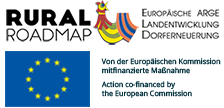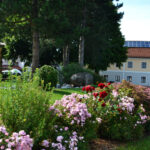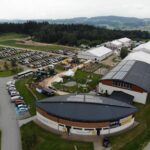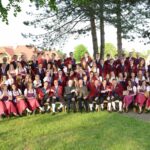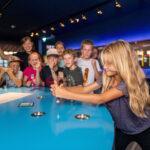Großschönau, Lower Austria, Austria
The market municipality Großschönau consists of 13 villages, spans 42 square kilometers and has around 1215 inhabitants. It is located in the Waldviertel quarter, close to the border to the Czech Republic in the very North of Austria. During the five daceds dominated by the Iron Curtain, a problem area formed around Großschönau, characterized by heavy out-migration because of its challenging conditions. The loss of the glass and textile industry at the end of the 20th century also devastated the region. A merger of municipalities around 1970 originally resulted in an identity struggle, but yielded an economically viable unit. With the support of an active club life that spans far beyond village borders, a new sense of community was fostered and lead to an increase in social involvement.
Focal points in Großschönau include an extensive cultural life, substantial infrastructure projects, social services and the field of energy and climate, for which the municipality is known throughout Lower Austria and beyond. Village renewal and development, accompanied by external experts, also plays a central role in the municipality.
The communal and cultural life as well as leisure activities are characterized by a very large number of active clubs in a variety of fields such as sports, leisure, music, children, youth, elderly, fire brigade, environment, mobility and health, which greatly improves the quality of life within the municipality. Additionally, the municipality is well-connected through numerous regional and transregional associations and is a founding member of many pioneering organizations.
The efforts made in the areas of energy and climate are of exceptional quality and therefore particularly noteworthy. The association BIOEM-Bioenergiemesse (bioenergy convention) Großschönau, the climate and energy model region Lainsitztal consisting of 6 municipalities, UWIN (Environmental Initiatives Lower Austria) and the association Sonnenplatz were founded in order to attend to energy issues. The first European “passive house village” was built in Großschönau in the early 2000s, offering trial living in this formerly unknown housing standard. The next step was the construction of a research and competence center for construction and energy, and the installation of an experience exhibition “Sonnenwelt” in collaboration with the University Budweis. In 2014, having welcomed over 100.000 visitors, “Sonnenwelt” received an Austrian Climate Protection Award. Additionally, it offers a trainee program to become an energy advisor.
Also worth mentioning is the establishment of a European Energy Symposium and the volunteer-based BIOEM bioenergy convention, which has been held annually since 1986, counting some 250 exhibitors and over 20.000 visitors every year. Großschönau was also the first Lower Austrian municipality that received e5 gold status. The municipality’s declared goal is to be energy-self-sufficient by 2030.
In regards to infrastructure, the project “Living in Waldviertel” serves as an attractive construction model for young families, with great attention to cultural construction aspects. Also noteworthy is Großschönau’s sewage water disposal, which is achieved through a constructed wetland.
In the social and health sector, the program “Healthy Municipality” and the association Betz should be mentioned. Betz is a bieonergetic training center that focusses on health promotion and offers over 60 courses and seminars every year, subjects ranging from health and wellness to personal development. Similar to the Health Center, established by the municipality, it is cared for by a general medical practitioner as well as several therapists, social services round off the health and care package.
The revitalization of the parsonage is especially interesting in regards to building culture and culture in general. It was organized and implemented by the cultural initiative “großARTig Großschönau”, creating a cultural center that offers a plaform for local artists and invites renowned artists for lectures, comedy, and readings.
The municipality Großschönau has been constantly developing since its founding in 1972. It makes great use of bottom-up processes, proactive involvement of its citizens and external experts in various fields. Großschönau is a place where community is cherished. The inhabitants identify strongly with their home while being open to new challenges. The prioritization of certain issues by the administration and associations alike stands testament to the municipality’s awareness of contemporary issues, which Großschönau motto-adequately faces with logical, local answers. Undoubtedly, Großschönau is a municipality of the future.
Evaluated: 2020
